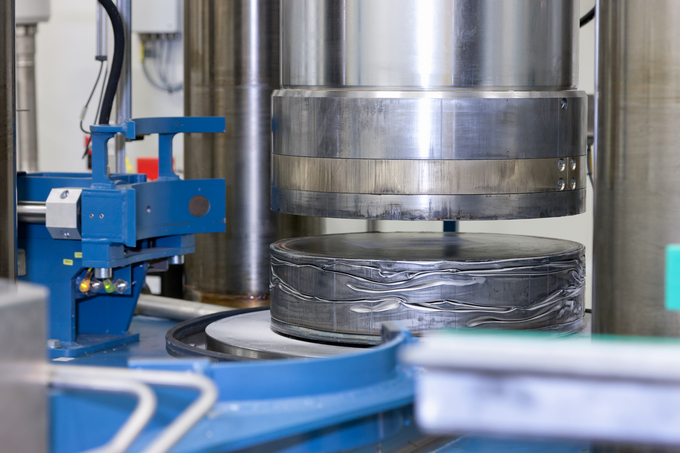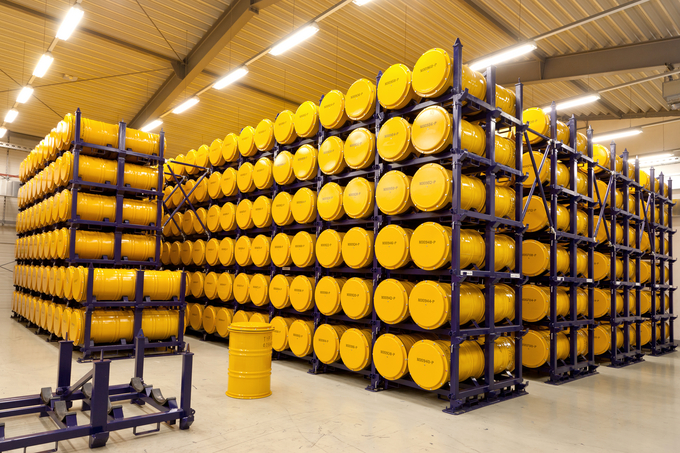Waste Treatment and Temporary Storage at Nuclear Engineering Seibersdorf Nuclear Engineering Seibersdorf is the only site where Austria’s radioactive waste is collected.
The premises of NES are located in the municipality Seibersdorf about 40 km southeast of Vienna. It is situated at the site of the local research centre. NES is a subsidiary (100 %) of the Austrian Institute of Technology (AIT) and has two main tasks that it carries out on behalf of the Republic of Austria:
- Treatment of all the radioactive waste produced in Austria, from collection to temporary storage
- Decommissioning and decontamination of equipment, facilities and materials leftover from 45 years of nuclear research and development activities at the site in Seibersdorf.
Depending on its type, the waste primarily undergoes three main process steps:
- Waste collection and separation: NES accepts the waste in a dedicated hall. The radioactive waste is unloaded from the transport vehicle and a preliminary characterisation is carried out. Then the waste is assigned to the necessary subsequent process steps.
- Conditioning: big and bulky waste, such as contaminated parts of equipment or buildings, needs to be disassembled and crushed before the conditioning process. In order to reduce the waste volume of contaminated parts, objects and materials are decontaminated when possible. This way they can be cleared from regulatory control and released into the conventional material cycle or disposed of in a landfill. Depending on the type of waste, the following process steps may be applied:
- Combustion of flammable solid and liquid radioactive waste: the radioactive substances are concentrated in the ash, which is then conditioned further. This way a large reduction in volume can be achieved and the reactivity of the material is suppressed.
- High pressure grouting of non-flammable waste: this process is also applied to reduce the waste volume. In addition grouting with high pressure compacts the material into a tight matrix which makes the removal of single components impossible. The compressed pieces of material are subsequently stacked into a waste drum.
- In cases where combustion or grouting of the waste is not an option, the material may be embedded into a solid matrix through cementation.
- Disused sealed radioactive sources that could not be returned to their producer are dismantled, documented and sorted according to their nuclides. Depending on the radionuclide and activity the sources are then processed and conditioned.
-
From drying to temporary storage: once conditioning of the waste drums is finished they are dried in a special drum drying facility and then taken to the air-conditioned temporary storage facility. In doing so the waste is also chemically stabilised. The waste drums are stored horizontally on steel racks. This way they are easily accessible and can be inspected regularly. All the necessary information for the waste management is documented and saved in a data base.
More information can be found on the website of Nuclear Engineering Seibersdorf. It includes detailed descriptions of the different methods and facilities used for waste treatment as well as further interesting information on this topic.



